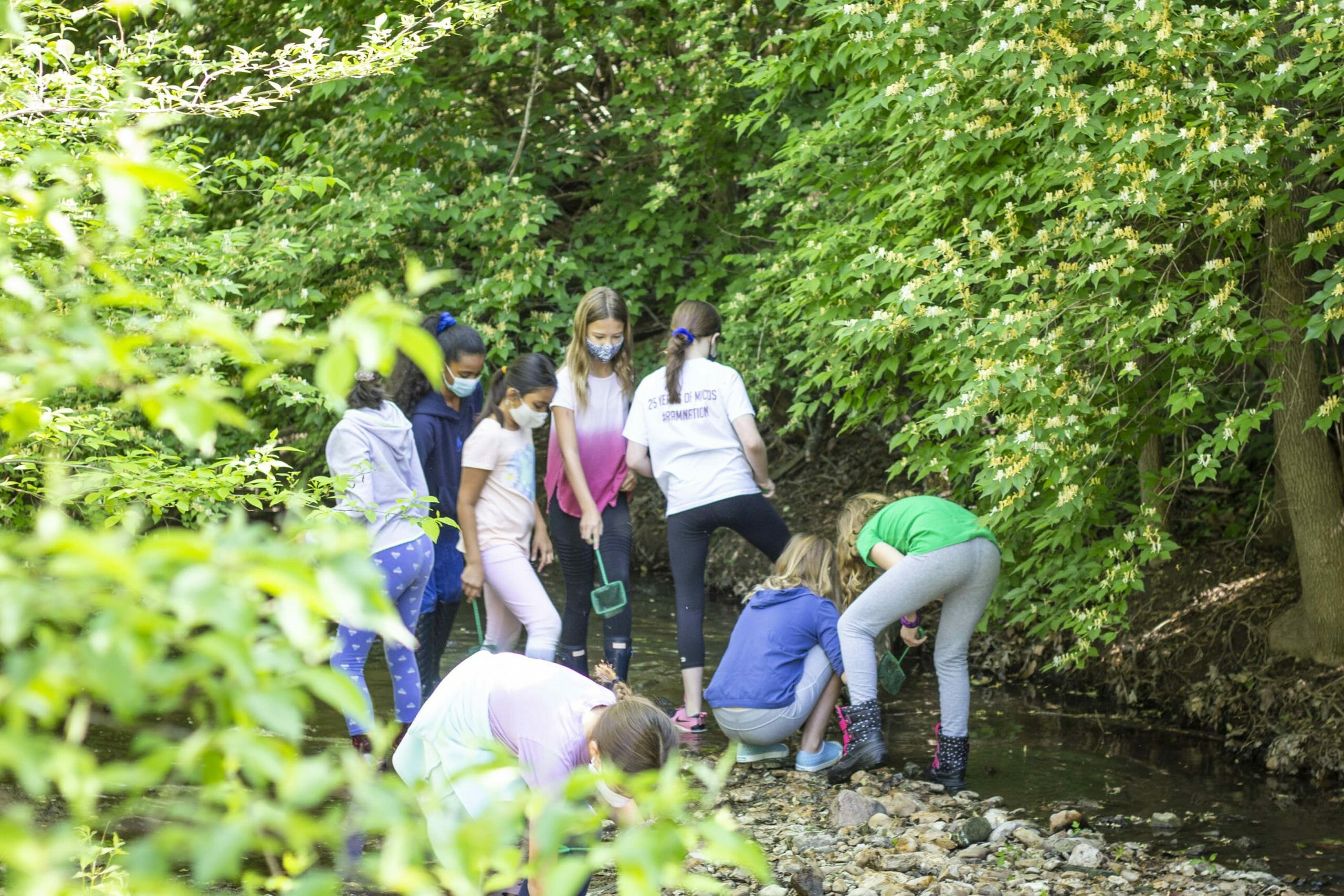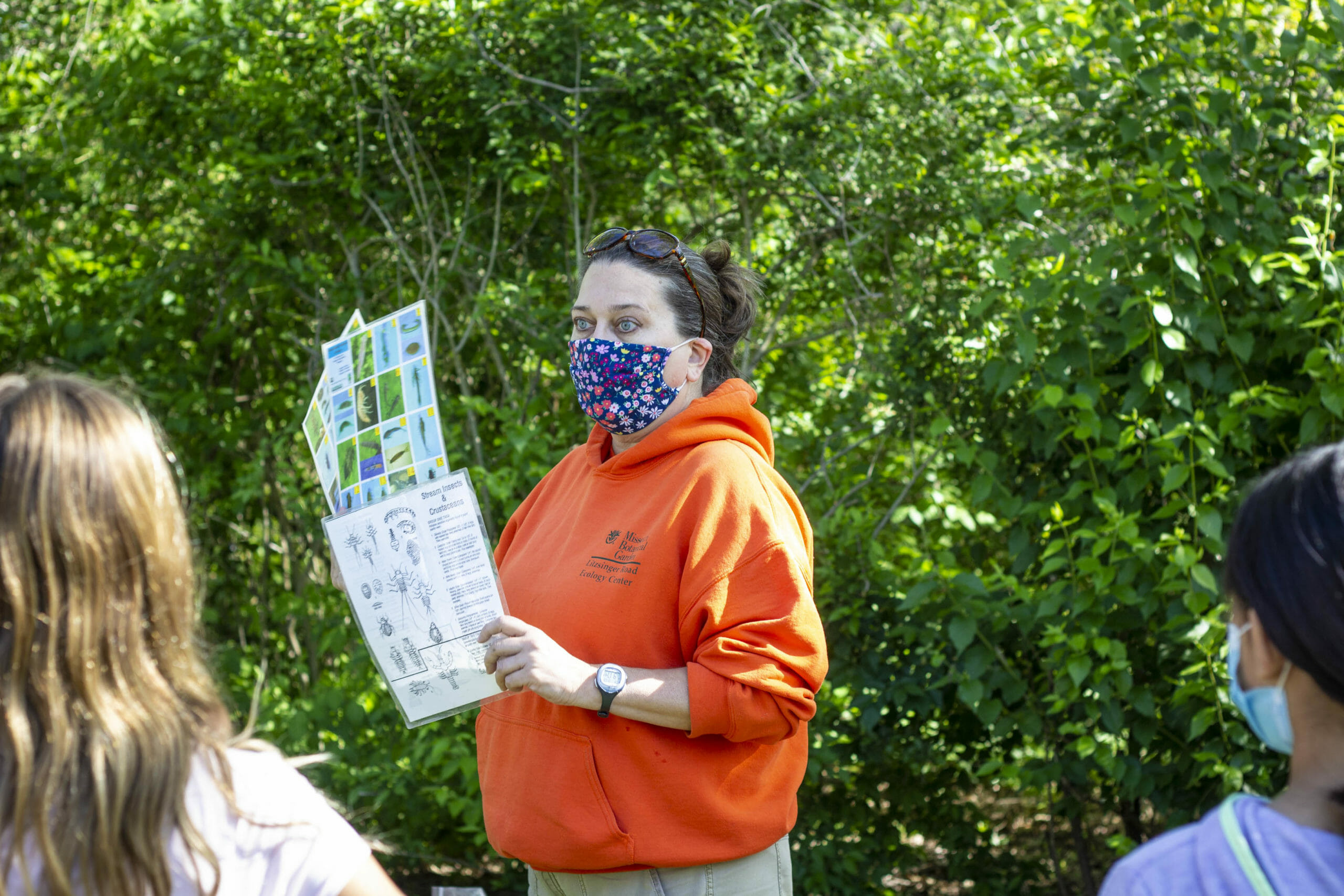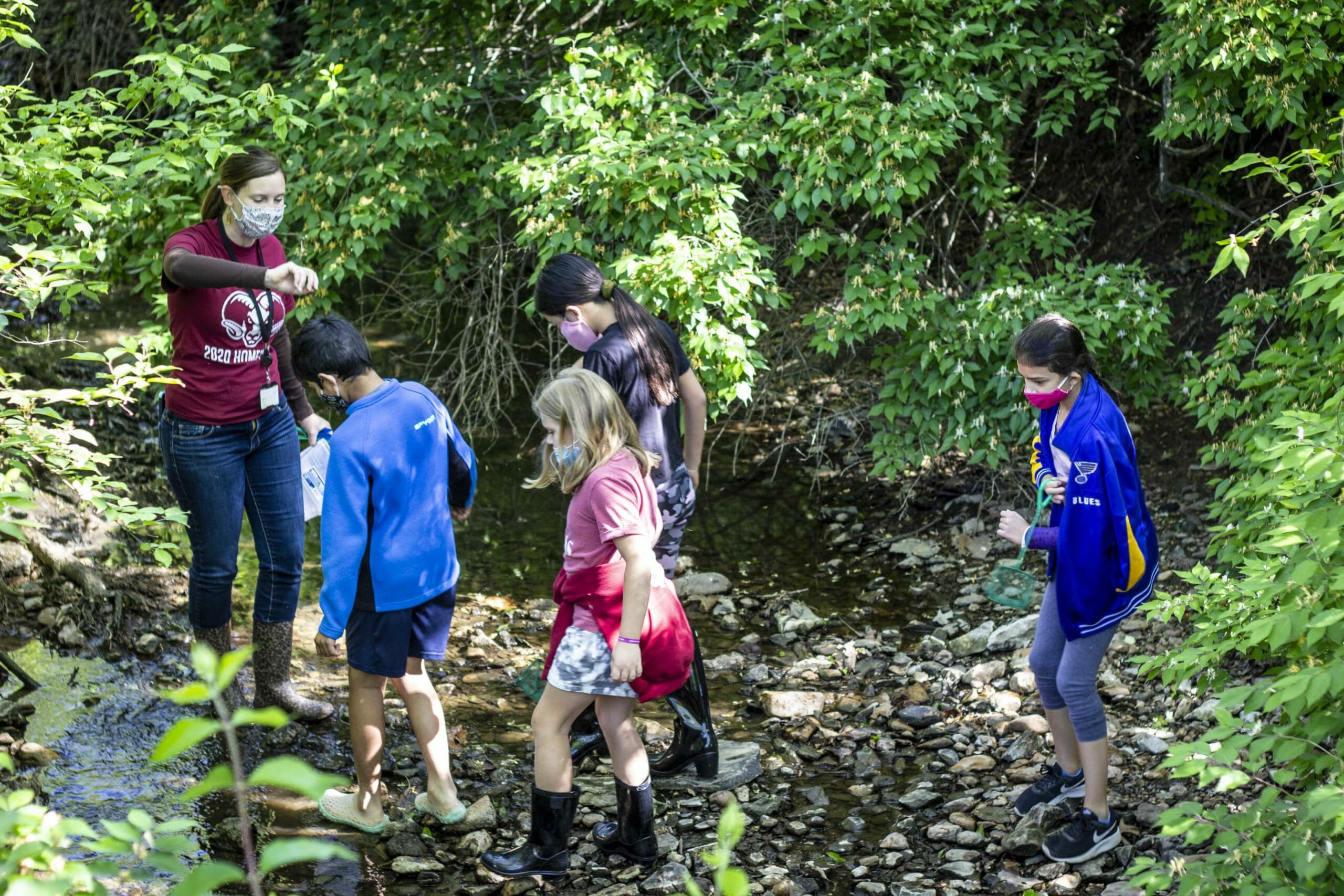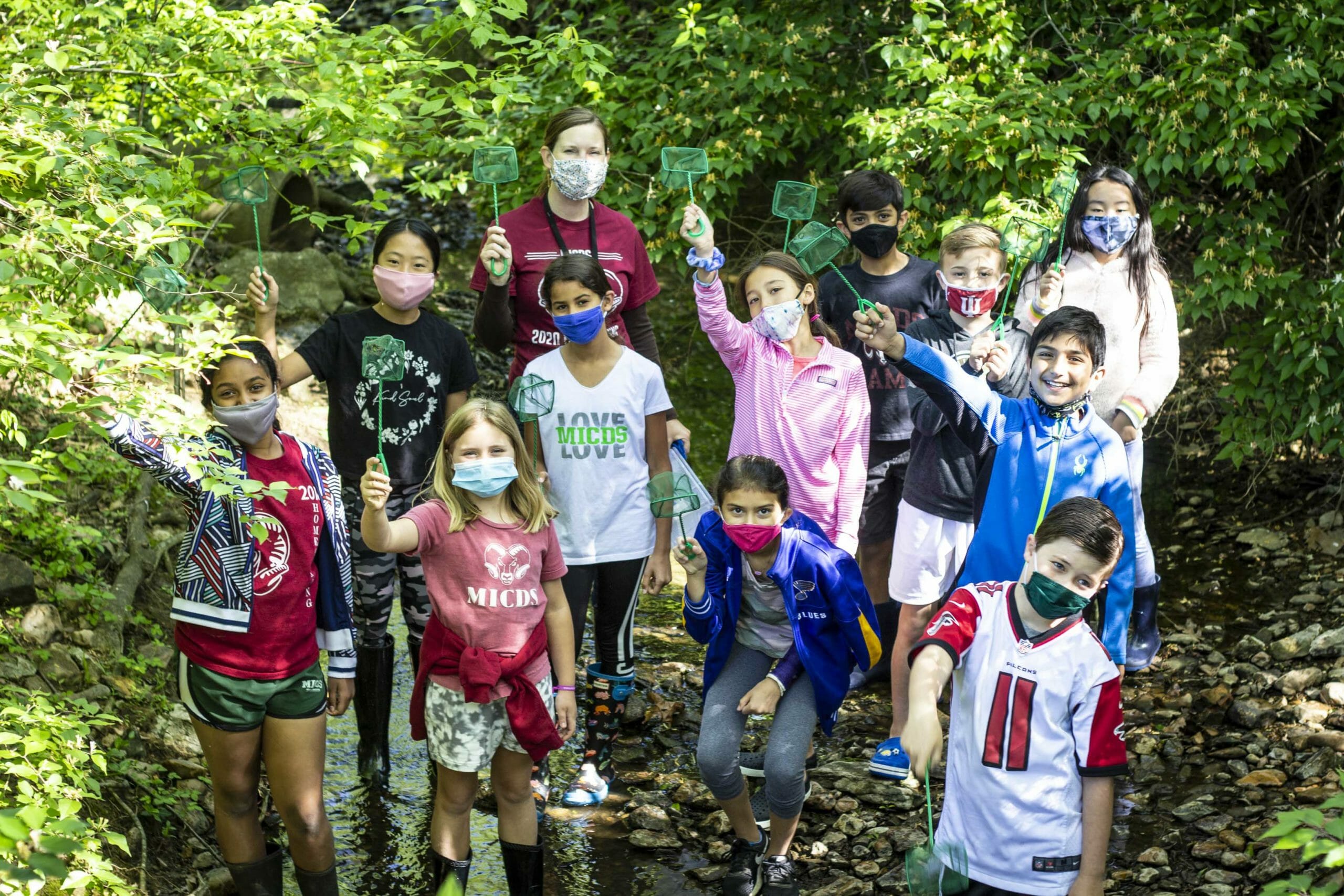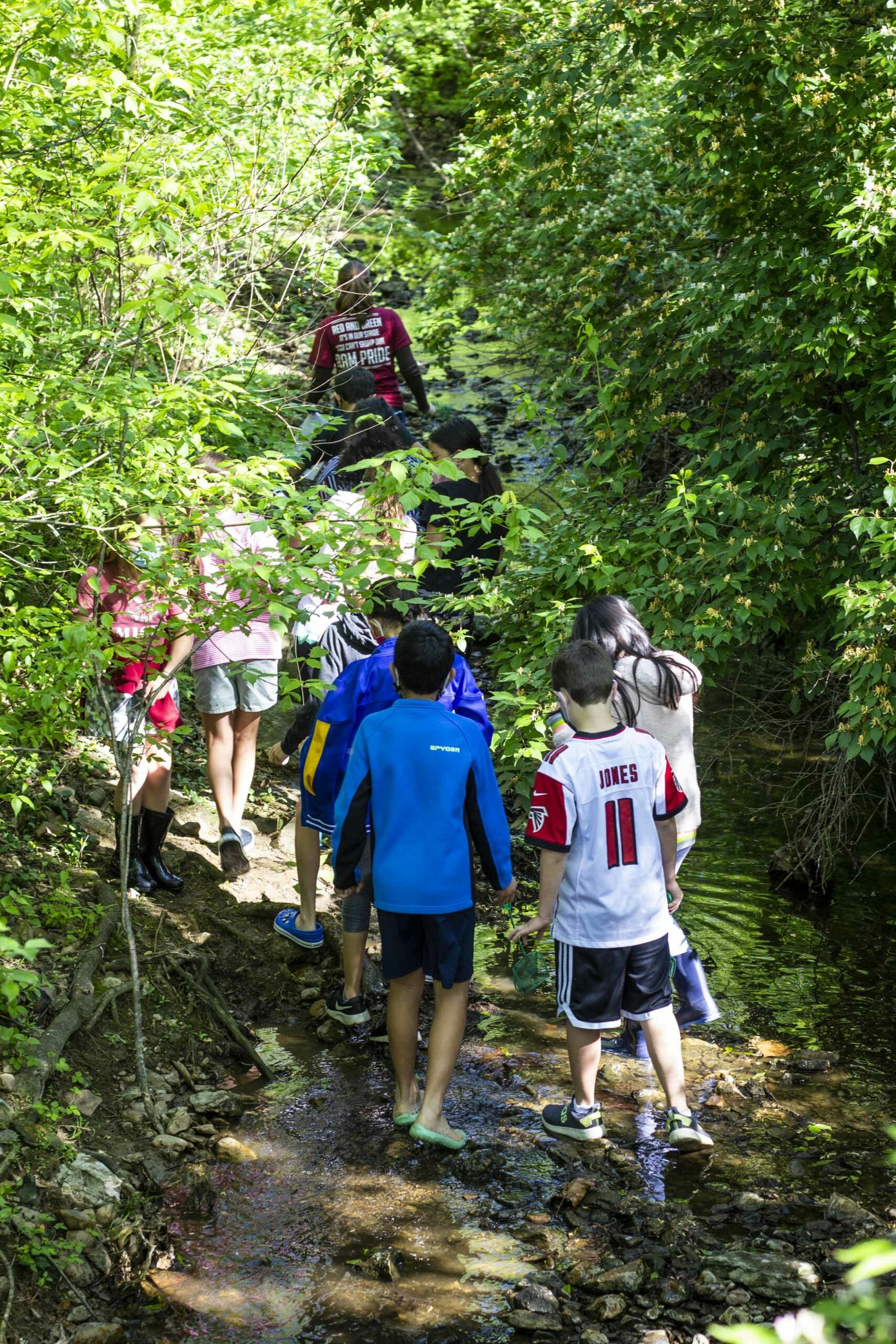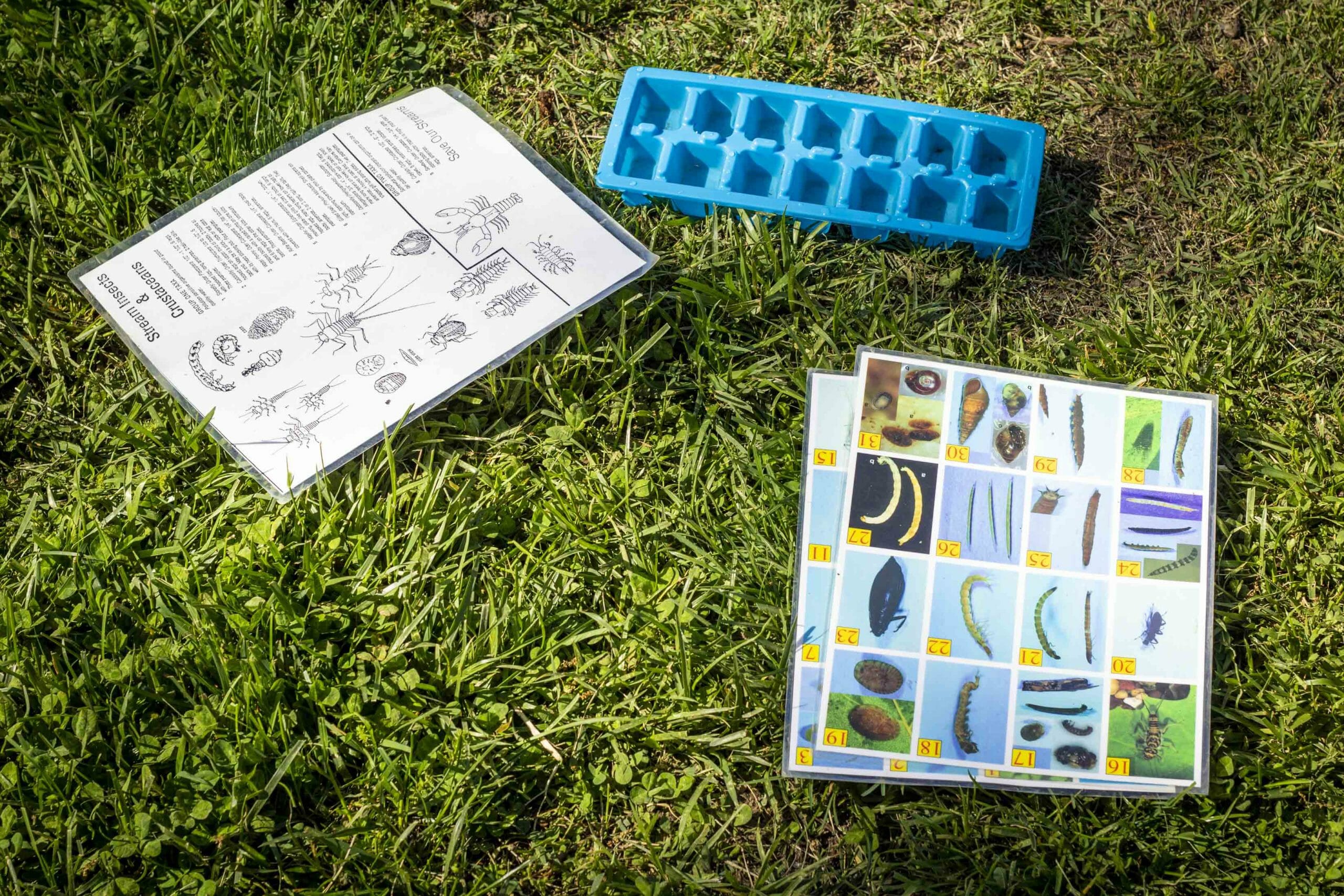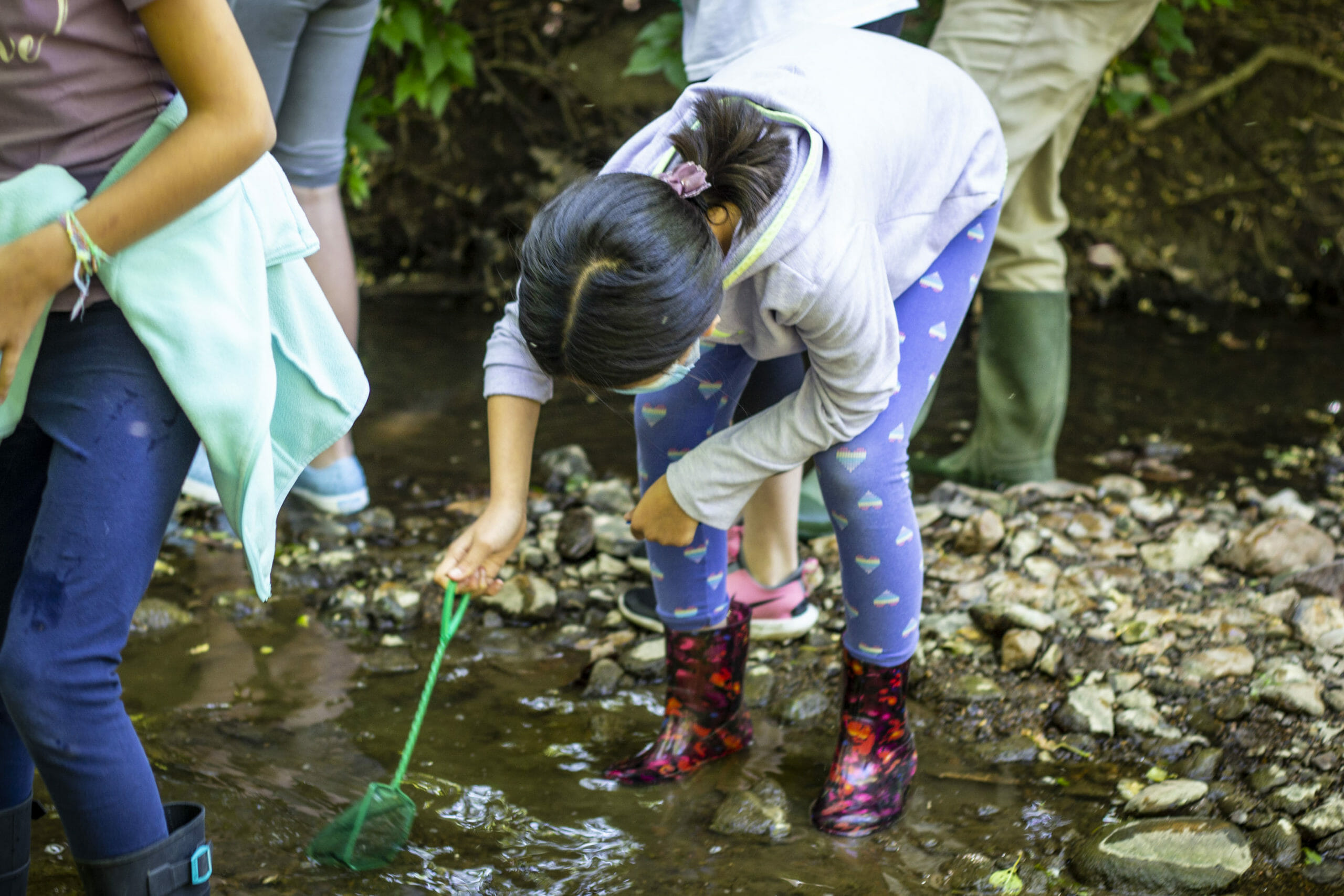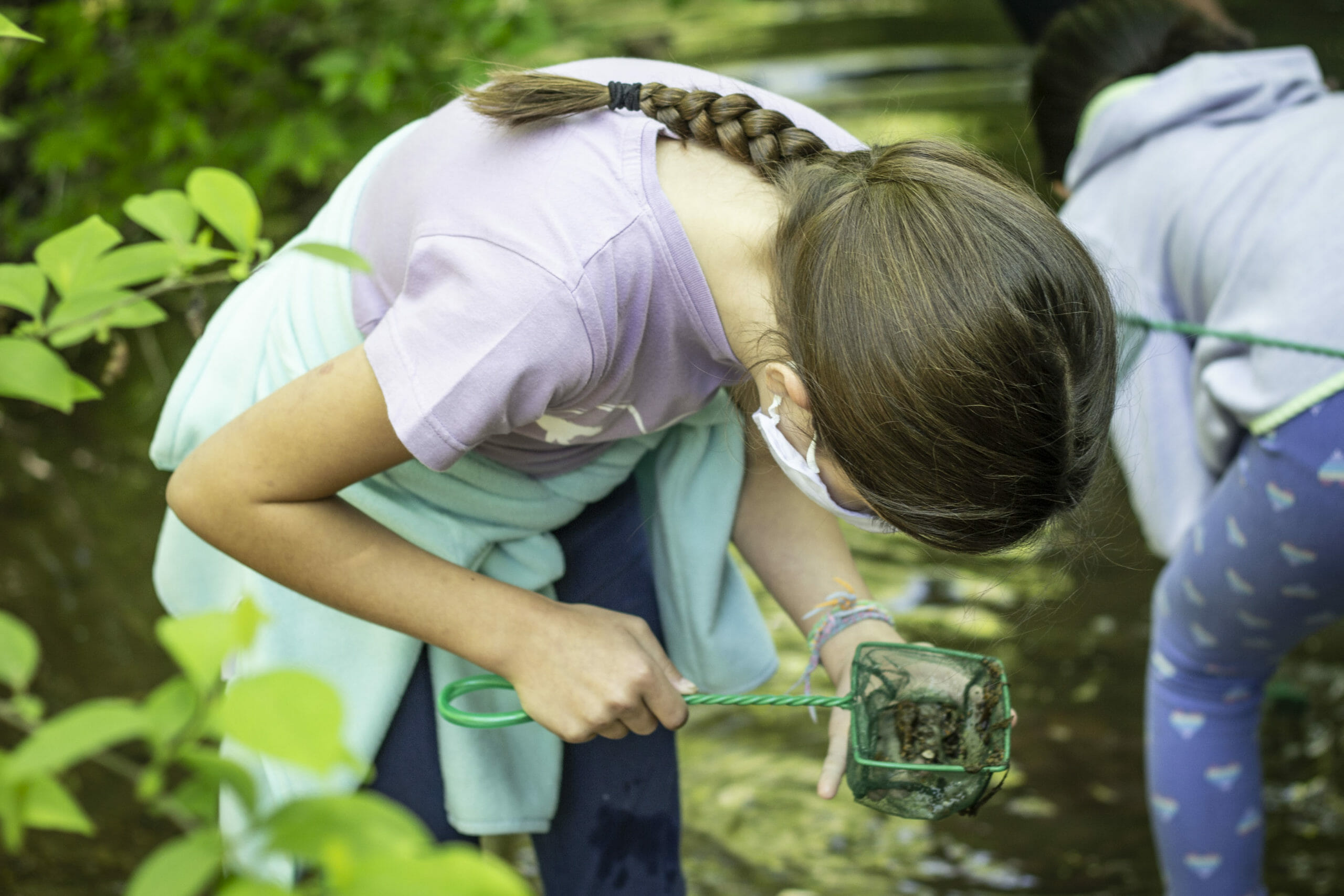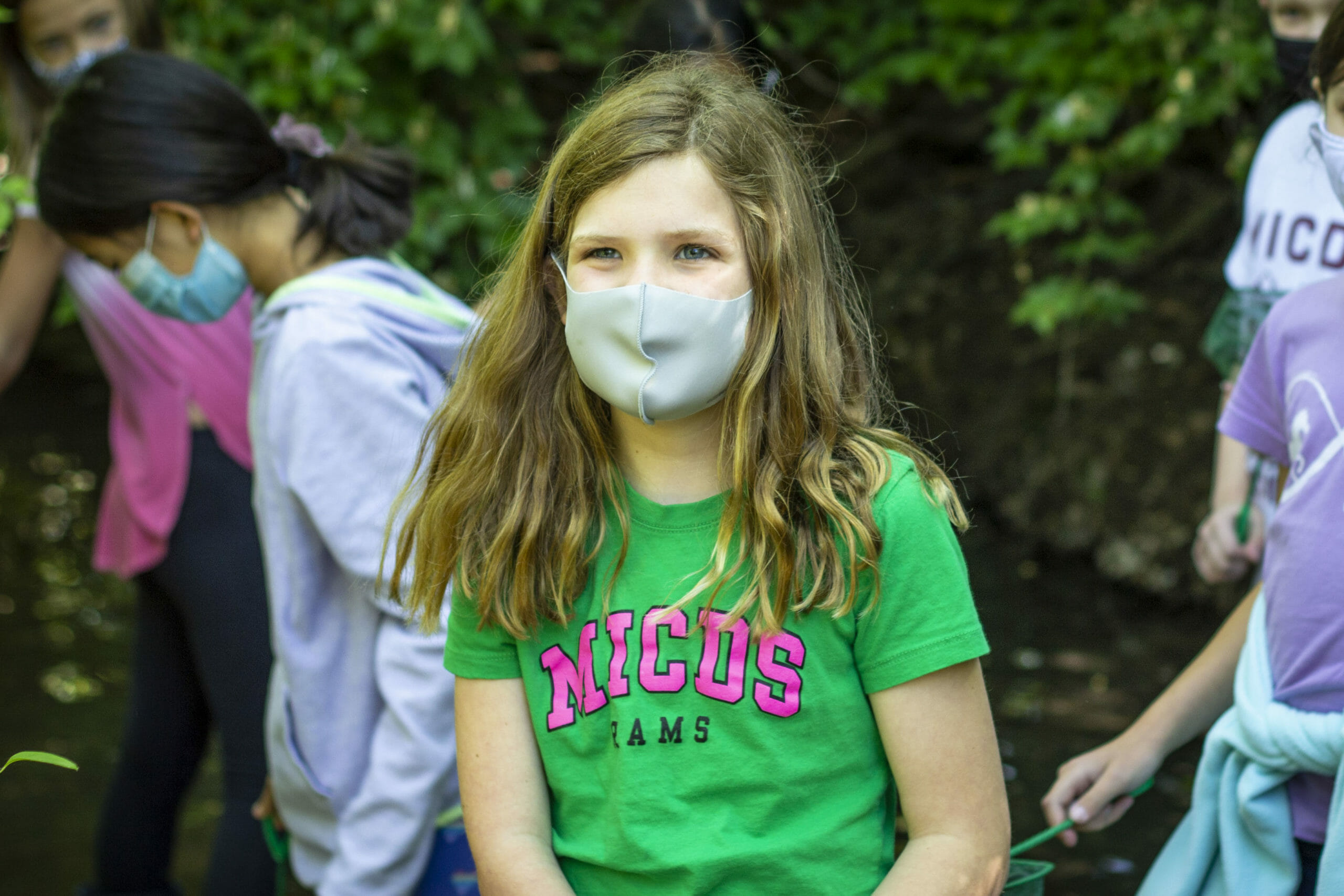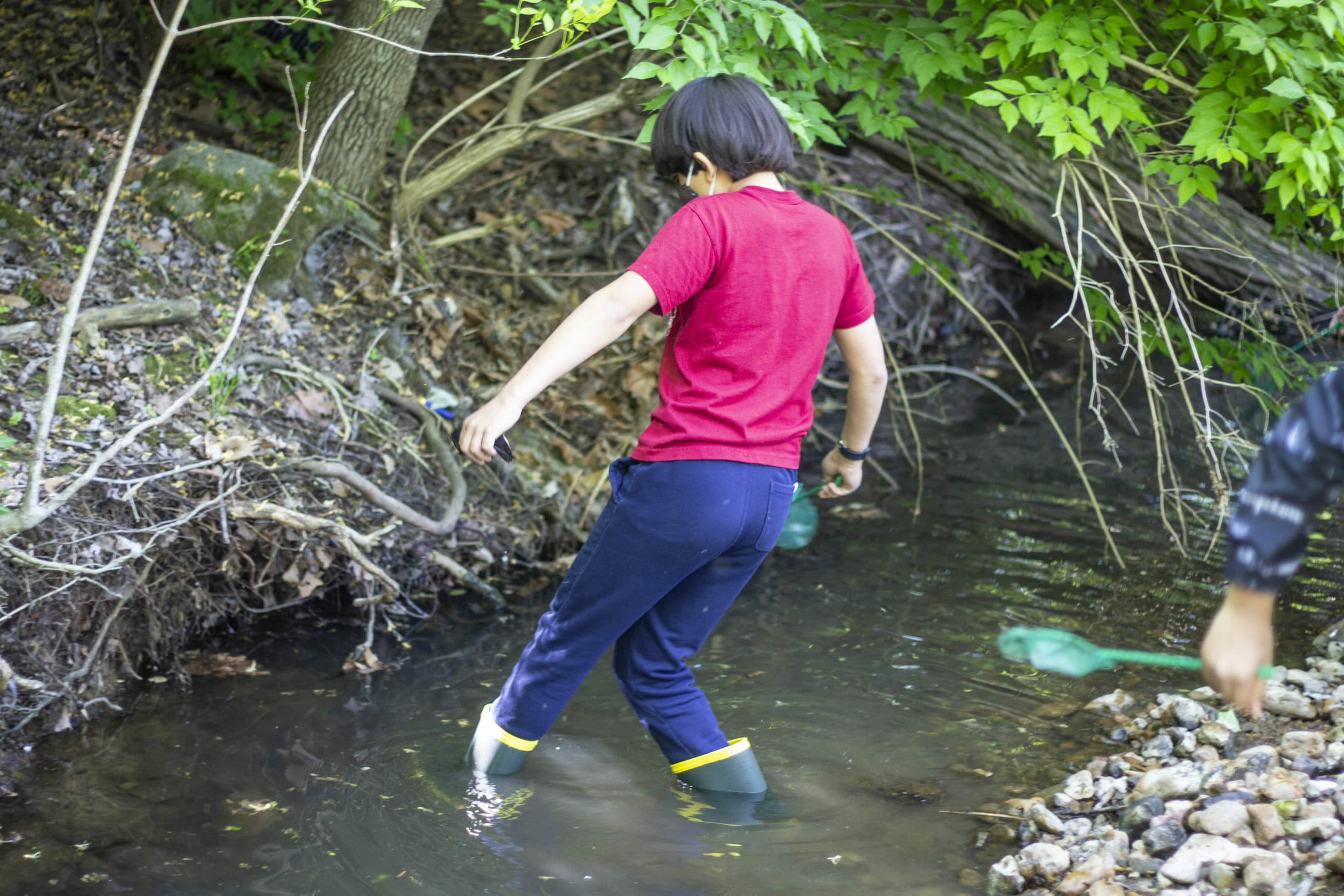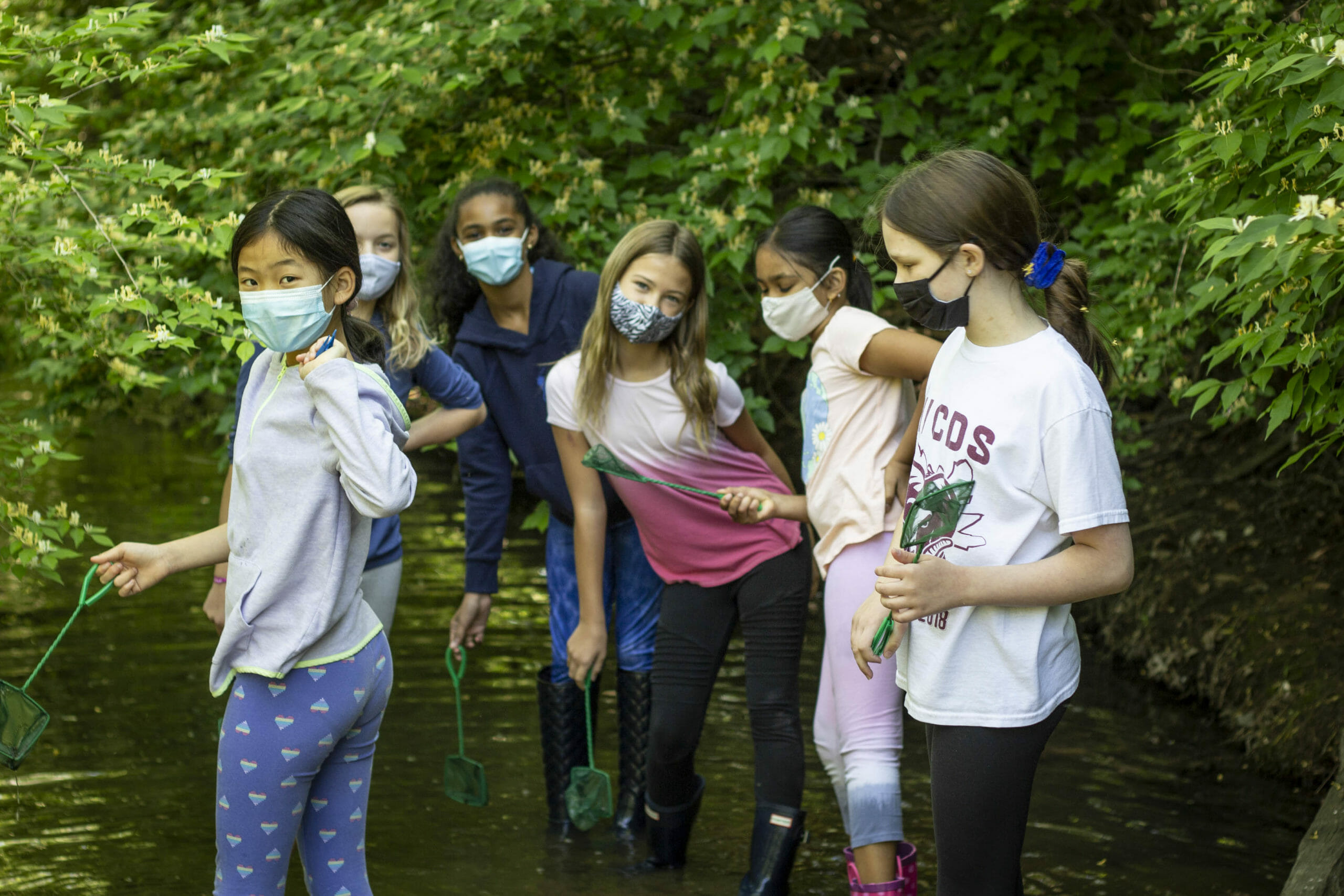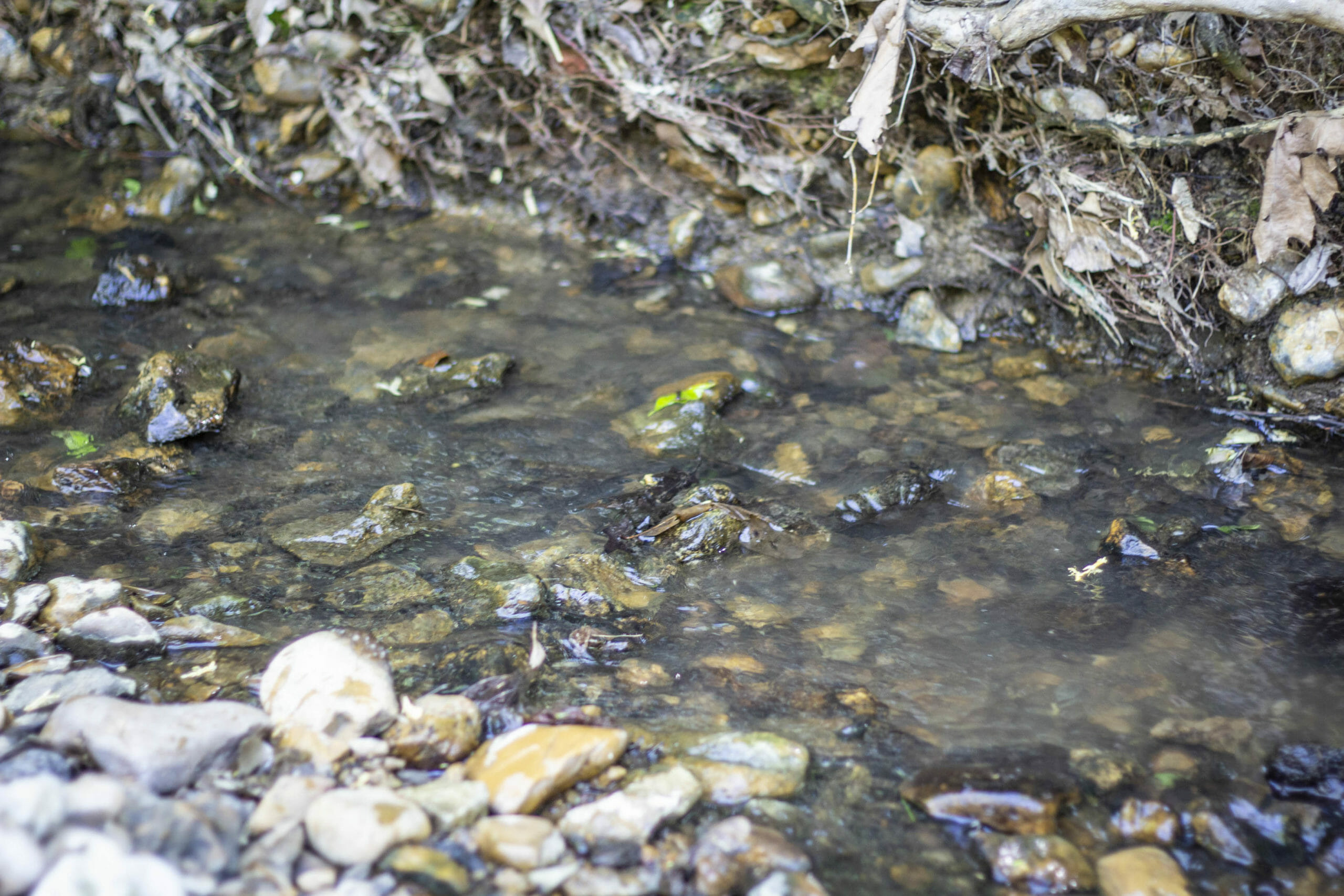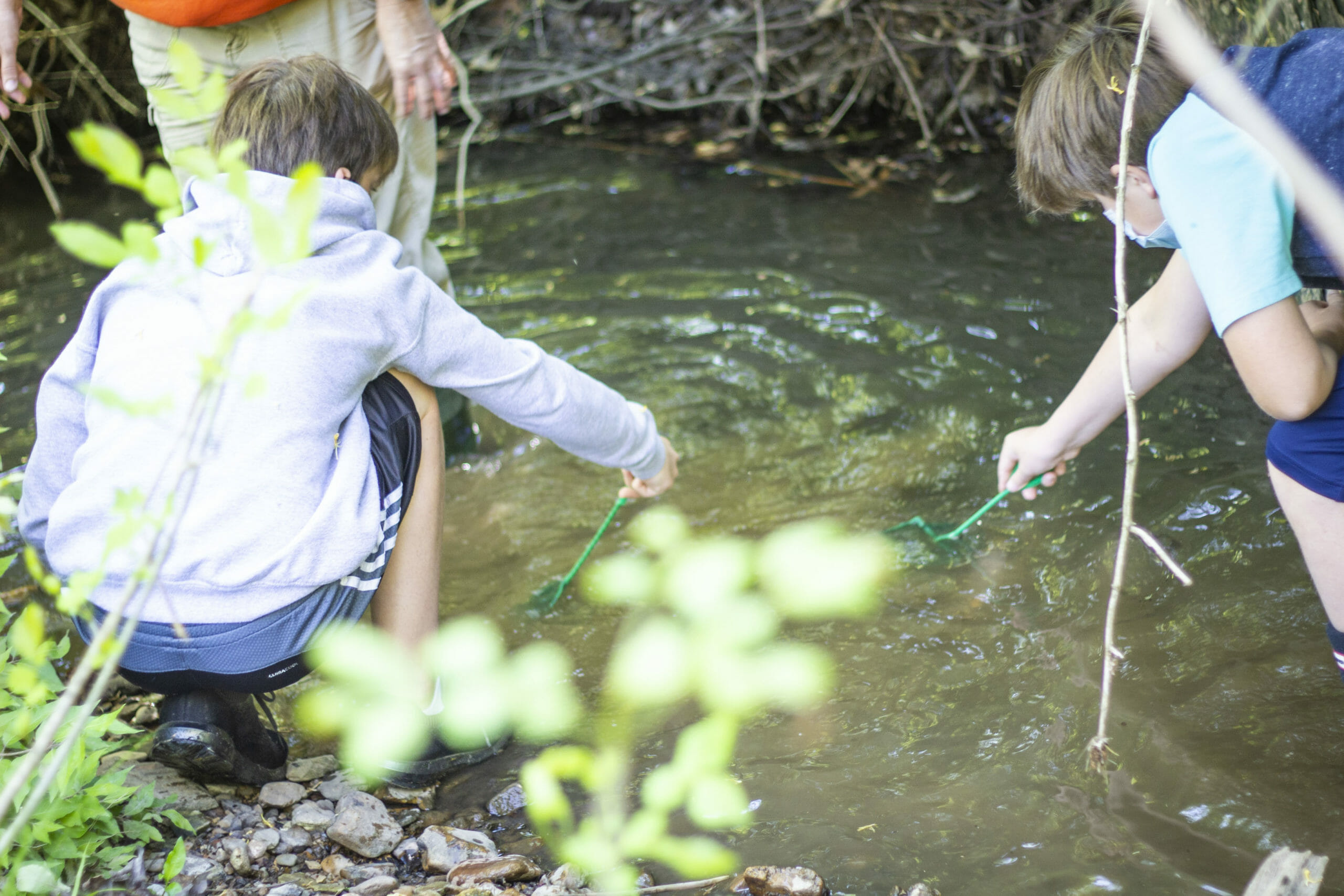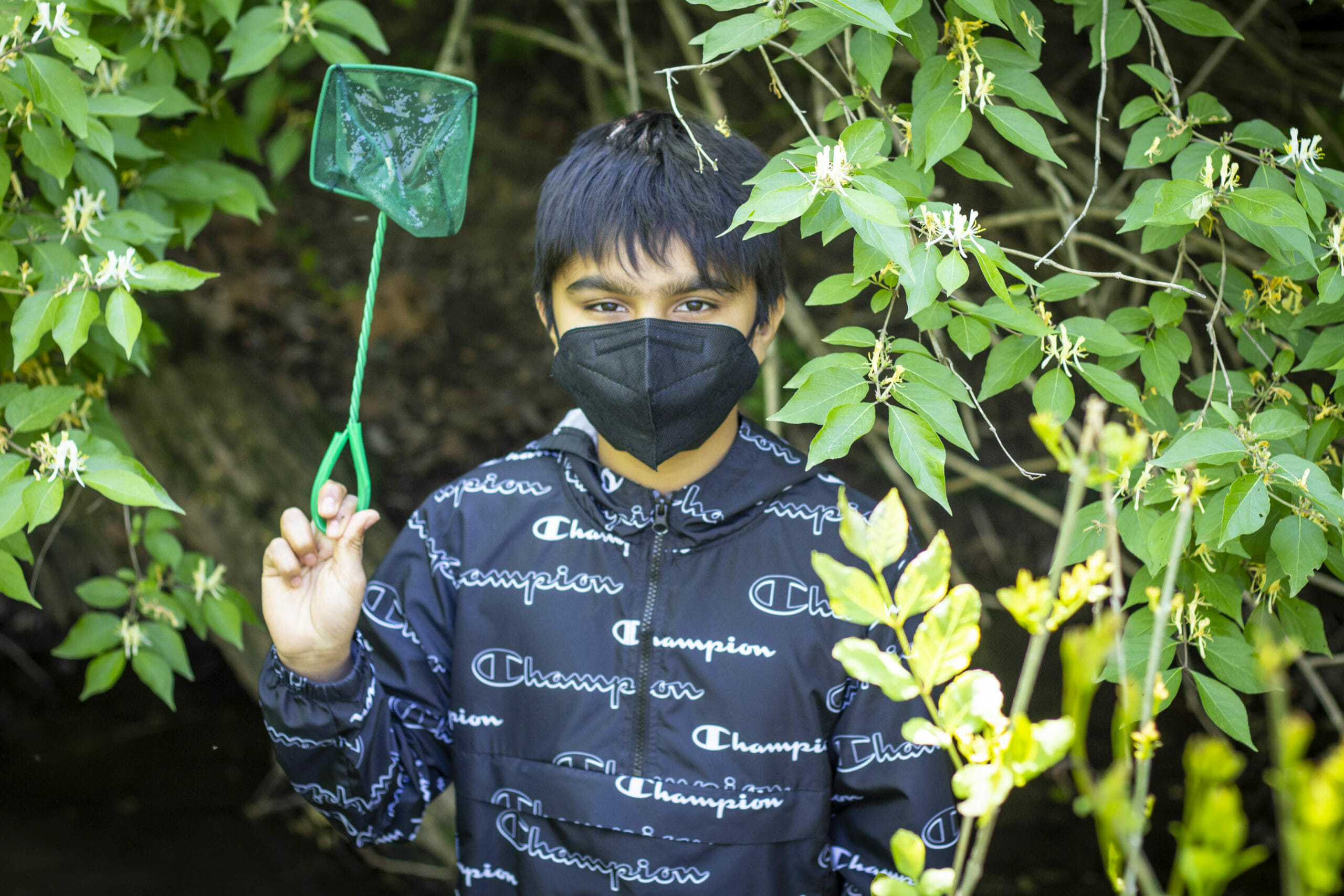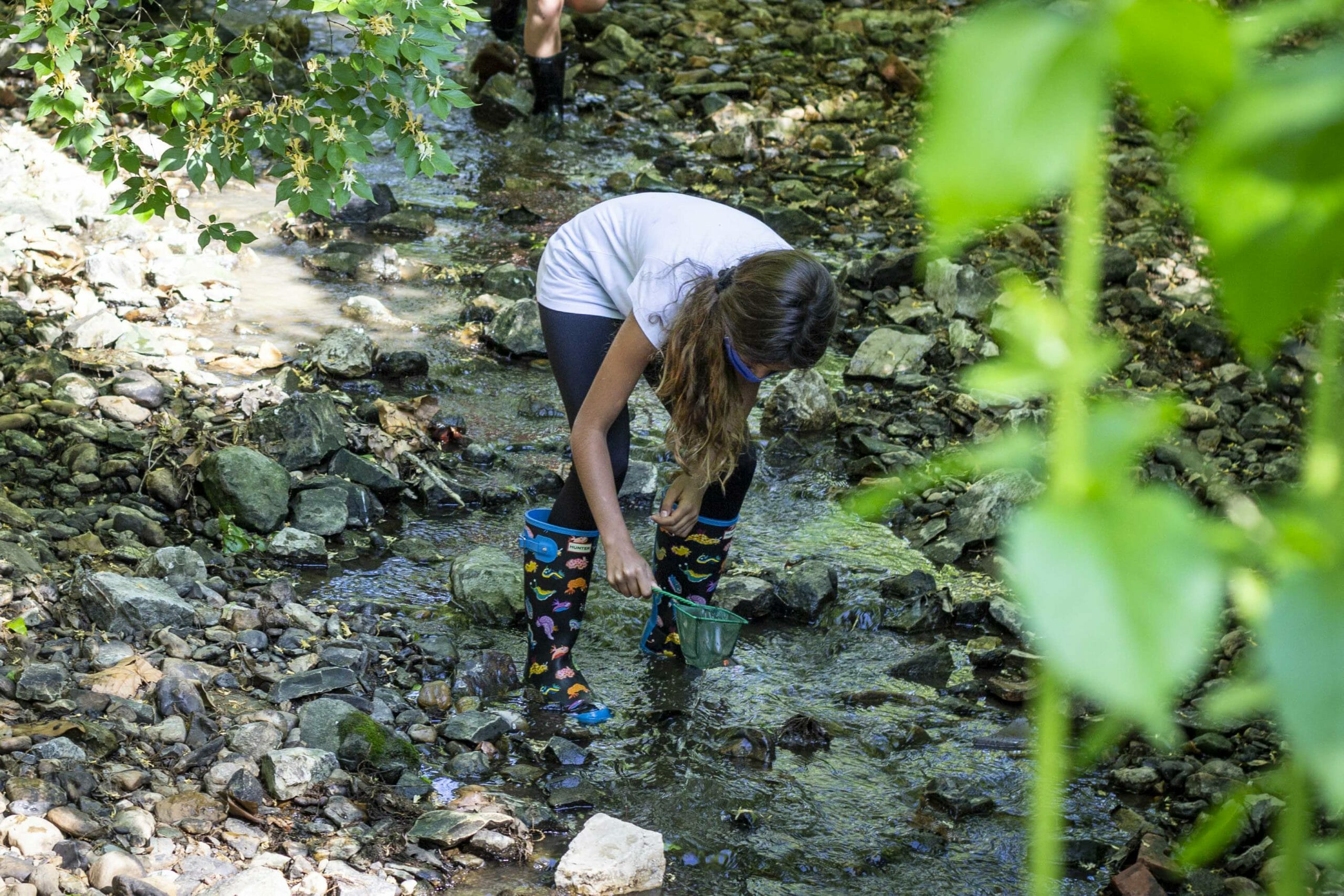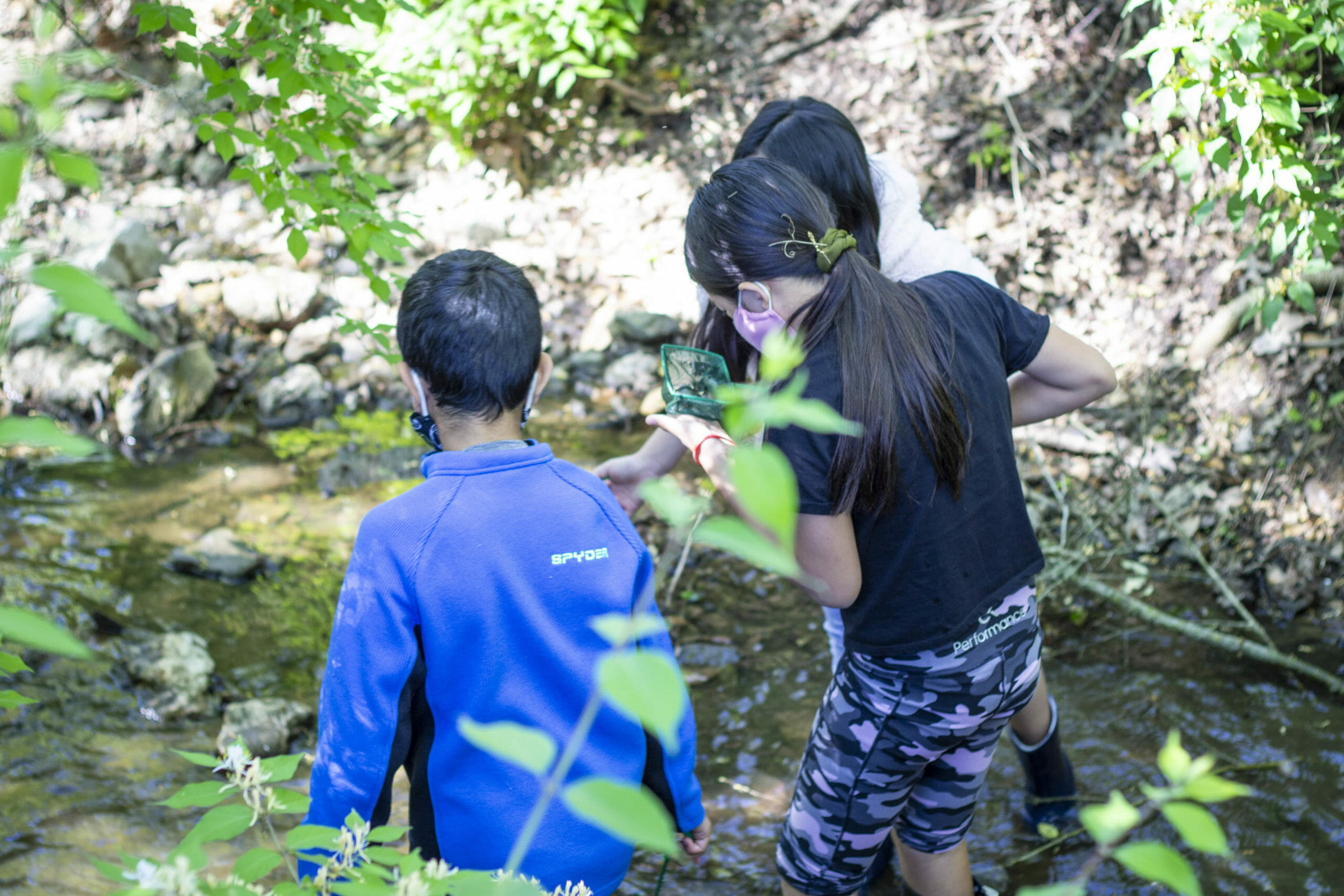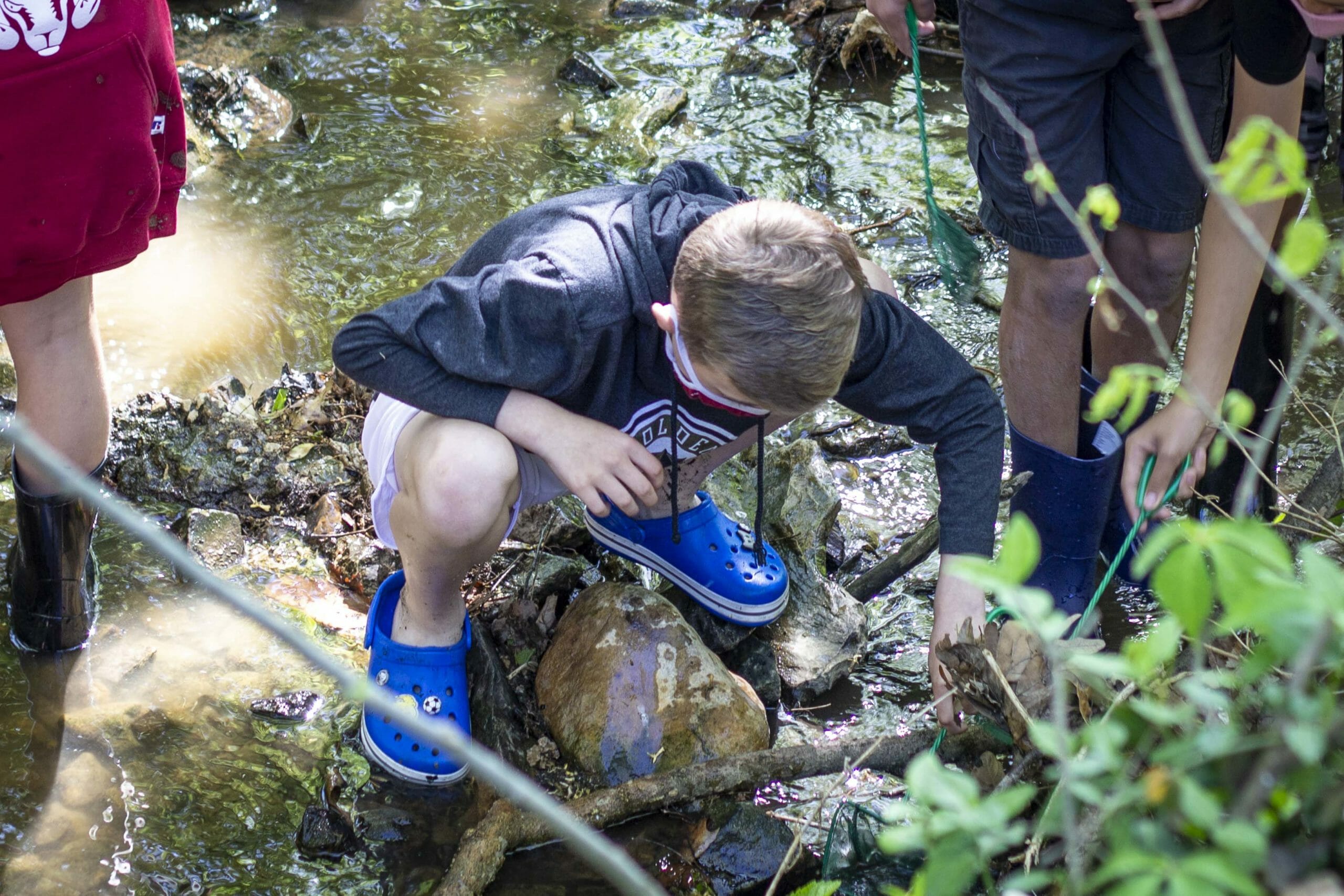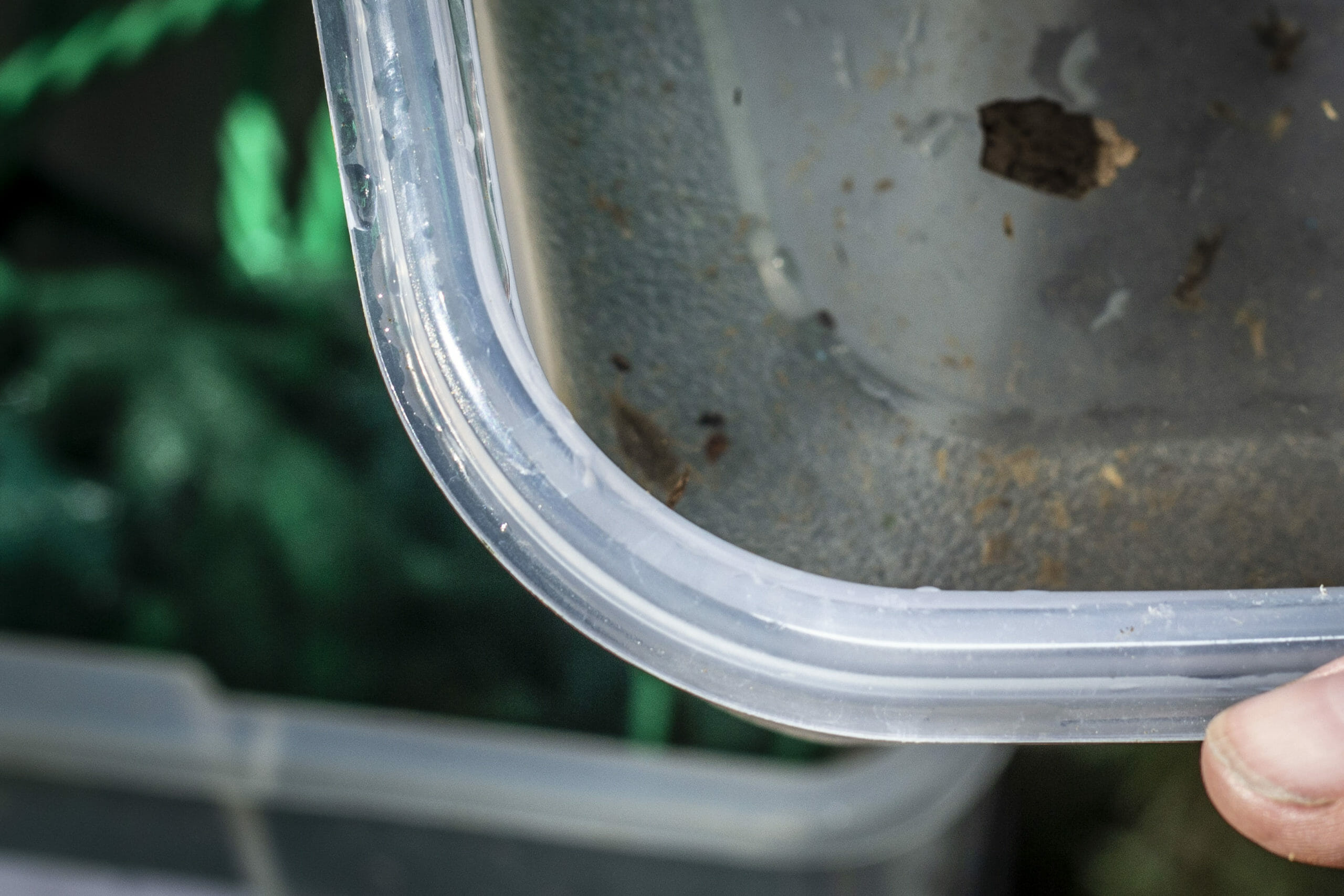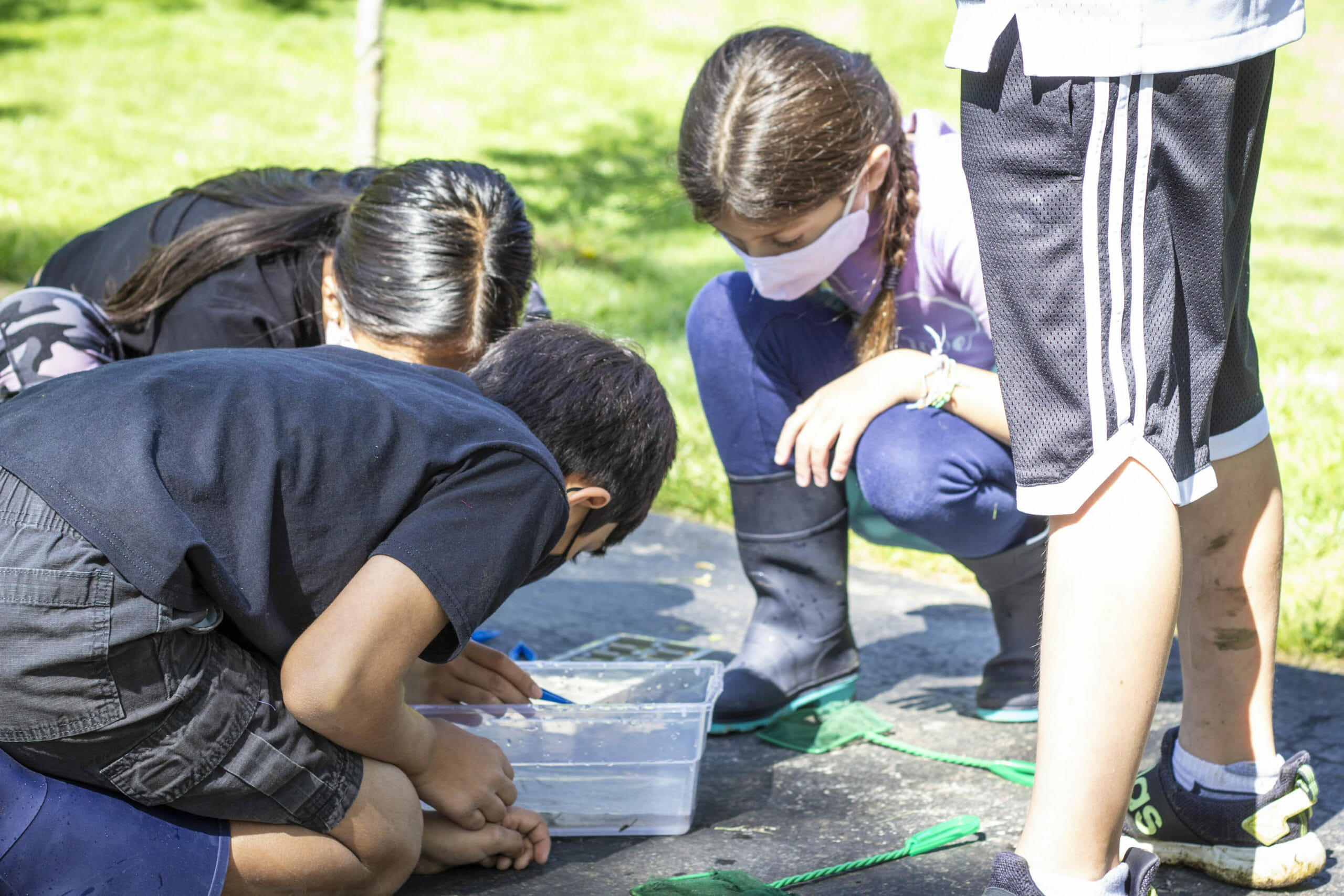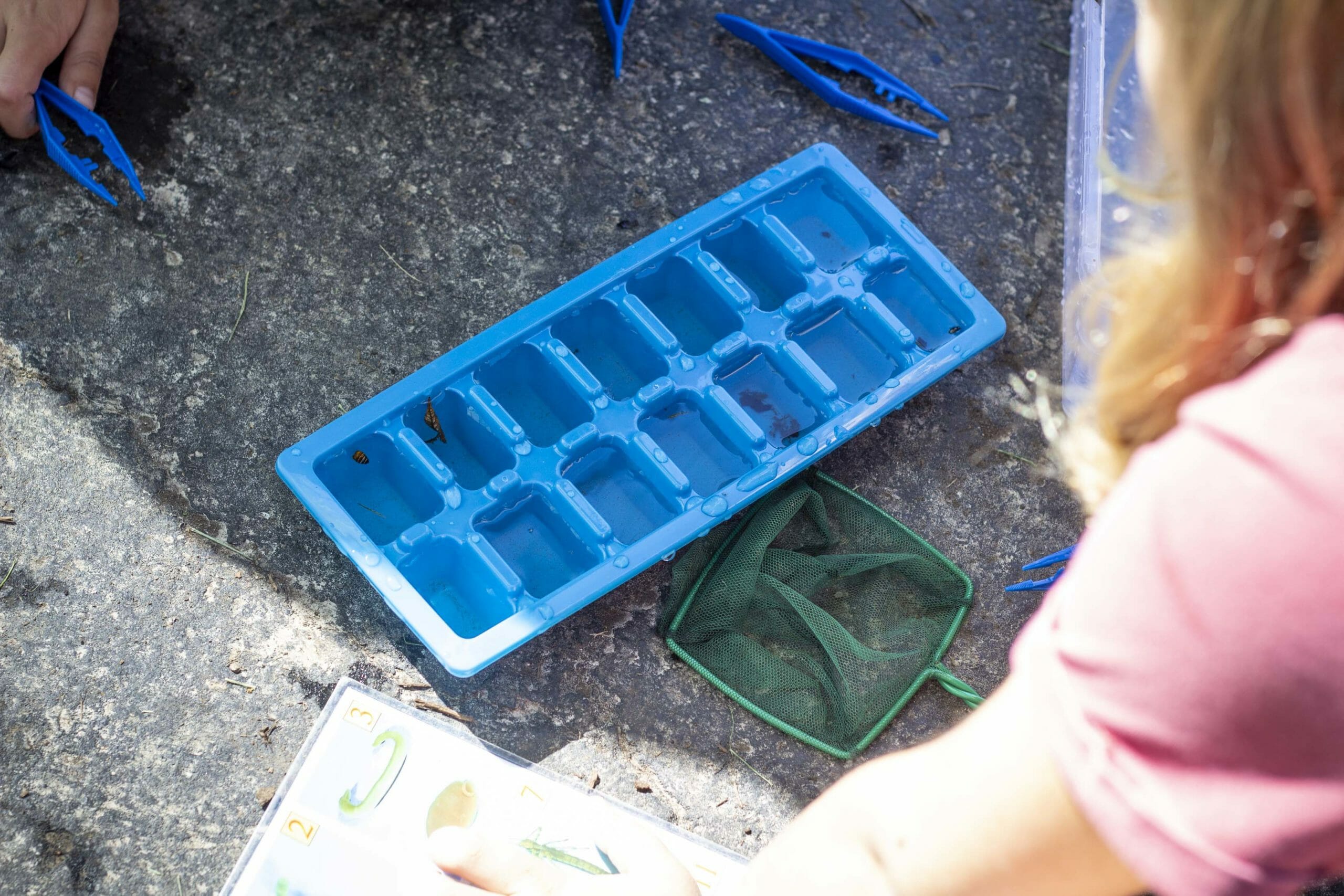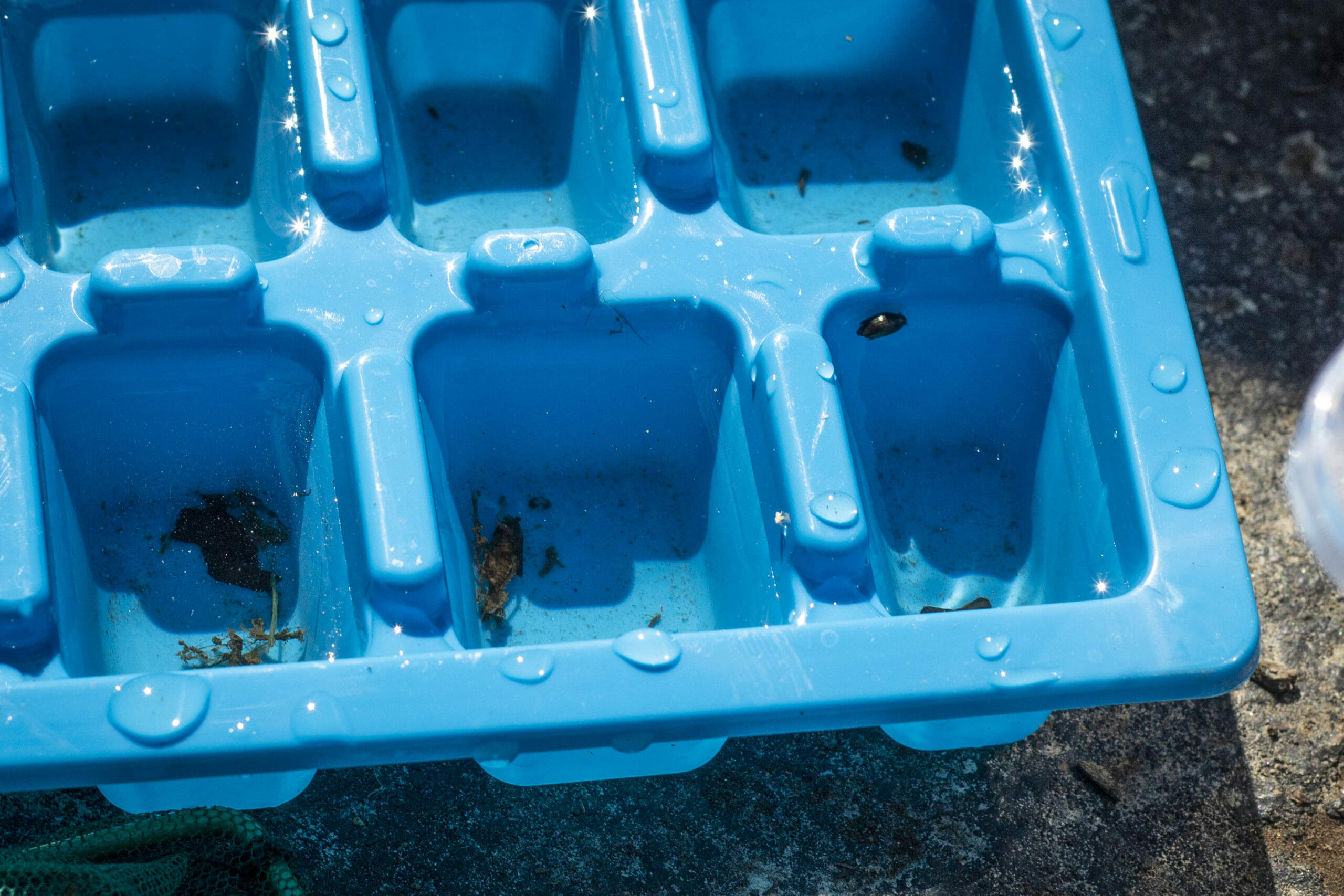By Laura Pupillo, Lower School Science Teacher
What is the water quality in our stream here at MICDS and how can we find out? On Thursday, our Beasley 4th graders worked to answer this very question as part of their 4th grade science capstone project. In connection with our partners at Litzsinger Road Ecology Center and with the Missouri Stream Team, which we learned about in a recent virtual Beasley Assembly, students worked as citizen scientists to collect real data on the health of our stream.
Through a water sampling process, students explored the stream by the Head of School house, testing for the presence of macroinvertebrates. They looked under rocks and waded through the stream while wearing rain boots to catch anything from scuds and water beetles to snails and crayfish. The macroinvertebrates we collected helped us determine the water quality in our own local stream. Students also got to see first-hand how water is the host to many vital organisms in a stream ecosystem.
So, what’s the verdict on the water’s quality? The presence of a riffle beetle, a scud, and a dragonfly nymph tell us the stream is not too polluted. A riffle beetle is sensitive to pollution and a scud and dragonfly nymph are only somewhat tolerant to pollution.
Great work, 4th grade citizen scientists!
